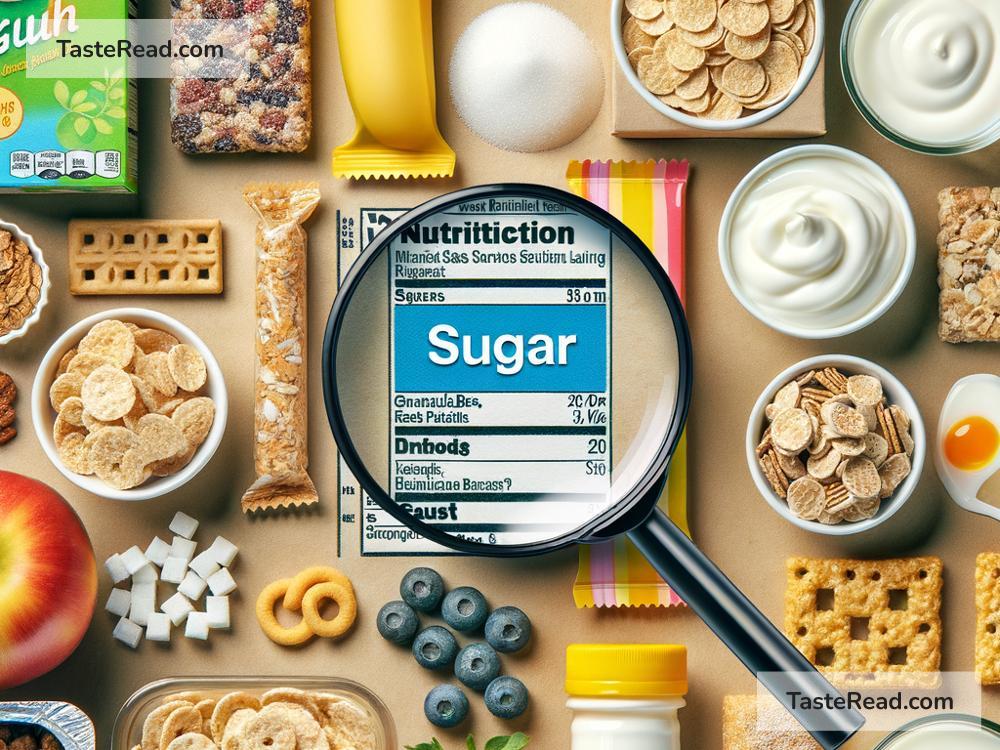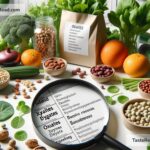How to Identify and Avoid Hidden Sugars
Sugar is everywhere! From sweet desserts to savory snacks, it sneaks into our daily diets more than we realize. While a little sugar isn’t harmful, too much can affect your health, leading to weight gain, diabetes, heart problems, and even tooth decay. But here’s the tricky part—some sugars are hidden in foods that don’t even taste sweet. So, how can you spot hidden sugars and avoid them? Let’s break it down in simple terms.
Why Hidden Sugar Is a Problem?
Not all sugar is visible. You can see sugar sprinkled on donuts or stirred into your coffee, but there’s another kind called “hidden sugar.” Hidden sugars are added to foods during processing, and they’re often disguised with fancy names on food labels.
Why is this a problem? Many processed foods, like sauces, breads, soups, or energy bars, contain hidden sugars. You might think you’re eating healthy, but you could be consuming far more sugar than you thought! This sneaky sugar can add up fast.
Common Foods with Hidden Sugars
Hidden sugars can be found in foods you might not expect, such as:
- Breakfast cereals: Many cereals—even ones labeled “healthy” or “whole grain”—can have sugar added.
- Yogurt: Flavored or fruit yogurts often contain lots of sugar. The labels might say “low fat,” but they compensate for flavor with sugar.
- Sauces and dressings: Barbecue sauce, ketchup, pasta sauce, and salad dressings are often packed with sugar.
- Granola bars: While marketed as healthy snacks, granola bars can contain as much sugar as a candy bar.
- Breads and crackers: Some breads and crackers have added sugar for better taste or freshness.
- Beverages: Drinks like flavored water, vitamin water, iced tea, and smoothies can have surprising amounts of sugar. Don’t forget sugary sodas and energy drinks too!
How to Identify Hidden Sugars
To spot hidden sugars, start with food labels. Here’s what to check:
-
Look at the “Total Sugars” on the label: Food labels often list grams of sugar per serving under “total carbohydrates.” This number includes both natural sugars (like those in fruits or milk) and added sugars. If the total sugar content seems high for a product that doesn’t need sugar—like bread—it might contain hidden sugars.
-
Read the ingredients list: Sugar can hide under many names. Watch out for terms like:
- High-fructose corn syrup
- Cane sugar or cane syrup
- Agave nectar
- Molasses
- Honey
- Maple syrup
- Coconut sugar
- Dextrose
- Fructose
- Glucose
- Maltose
If any of these ingredients appear high up on the list, it means the product has a lot of added sugar.
-
Be careful of misleading labels: Phrases like “low fat” or “healthy” don’t necessarily mean low sugar. Sometimes manufacturers reduce fat but add sugar to make the food taste better.
-
Know your daily limit: The World Health Organization recommends that added sugar should make up no more than 5% of your daily calorie intake. For an average adult, that’s roughly 25 grams (or about 6 teaspoons) per day.
Tips to Avoid Hidden Sugars
Now that you know how to spot them, let’s talk about avoiding them. Here are practical tips:
-
Choose whole foods: Eating fresh fruits, vegetables, whole grains, and unprocessed meats is the best way to avoid hidden sugars. They’re natural and don’t come with unexpected extra sugar.
-
Cook at home: Preparing meals at home lets you control what goes into your food. You can skip sugary sauces and make your own dressings, marinades, or soups.
-
Check labels: Become a label detective! Compare products and pick ones with little to no added sugar. This applies to everything from cereals to condiments.
-
Switch beverages: Instead of drinking sugary sodas, juices, or flavored teas, choose water, herbal tea, or unsweetened coffee. Add slices of lemon or cucumber for flavor.
-
Snack smarter: Opt for healthy snacks like nuts, seeds, fresh fruit, or plain yogurt instead of highly processed granola bars or chips.
-
Pick unsweetened options: Look for “unsweetened” versions of foods like yogurt, applesauce, almond milk, or canned fruit.
-
Educate yourself: The more you learn about food, the better choices you’ll make. Awareness is the first step to healthier eating.
Conclusion
Hidden sugars can be sneaky, but with a little effort, you can catch them in their tracks. Don’t rely just on taste—check labels, know sugar’s other names, and make conscious choices about what you eat. Start replacing processed foods with whole foods, and limit snacks or drinks packed with sugar. By being mindful of hidden sugars, you’ll take a big step toward better health and a happier lifestyle.
Sugar isn’t your enemy—but moderation is key. Trust yourself to make smarter food choices and enjoy your meals without worrying about hidden threats. Soon, these habits will become second nature, and your body will thank you!


